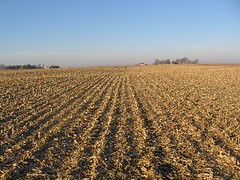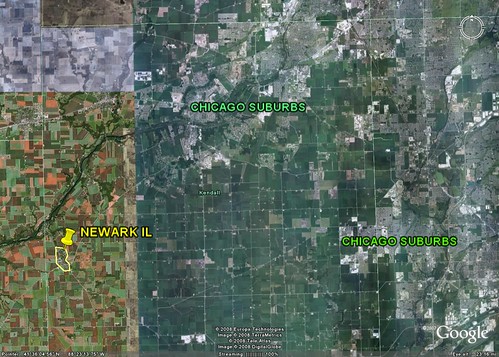A sure sign that sprawl is in trouble: farming is starting to beat it in the land market

Posted September 23, 2008 at 1:52PM
When farmland that was slated for an exurban housing development is sold by the developer at a loss back to farming interests, you know that sprawl has passed its peak. Especially if it is just beyond the edge of a major metropolitan area. But that is exactly what has happened in Kendall County, Illinois.
 When the American Farmland Trust undertook its comprehensive study of endangered farmland, Farming on the Edge, Kendall County is the kind of place it had in mind. One of the "collar counties" around Chicago, and to the city's southwest, Kendall has been one of America's fastest-growing counties. Its rate of population growth doubled in just 15 years, from 1990 to 2005. Housing construction permits nearly tripled in just six years, from 2000 to 2006 (before the bottom fell out of the national housing market), according to city-data.com.
When the American Farmland Trust undertook its comprehensive study of endangered farmland, Farming on the Edge, Kendall County is the kind of place it had in mind. One of the "collar counties" around Chicago, and to the city's southwest, Kendall has been one of America's fastest-growing counties. Its rate of population growth doubled in just 15 years, from 1990 to 2005. Housing construction permits nearly tripled in just six years, from 2000 to 2006 (before the bottom fell out of the national housing market), according to city-data.com.
Yet the county has traditionally been a highly productive farming region, producing corn and soybeans to the tune of $141,000 per year per farm, on average. It is one of the counties marked in red on AFT's map of Illinois, signifying the presence of both high-quality farmland (90-95% of its land qualifies as prime soils) and high potential for development. Concerned, Kendall's local government adopted a farmland protection ordinance authorizing the purchase of conservation easements in 2005.
On the county's western edge sits the farming village of Newark, just over 50 miles from the Chicago Loop. Newark is home to only a little more than 1000 residents and is completely surrounded by productive farmland. Yet its average home value went up 61 percent in only 6 years, from 2000 to 2006, and its population increased 18 percent during that period. Developer Lakewood Homes saw the potential and bought 290 acres of land on the edge of Newark in 2005. That's a lot for a community of 1000.
But fear not, conservationists: five months ago, the property was sold to Hancock Agricultural Investment for 40 percent less than Lakewood paid in 2005, according to Daniel Pimlott in the Financial Times. Hancock plans to grow corn and soybeans. Pimlott quotes Chris Shaxted, executive vice-president of Lakewood: "Basically what happened was we bought it as future development land and sold it as farmland" (which, of course, it had been in the first place).
Pimlott sees a trend:
"Demand for new homes on the outskirts of US towns has fallen spectacularly in the last three years, while foreclosures and speculative building have created a far greater supply of homes than there are buyers. At the same time, soaring fuel costs have made the long commute to work that much less attractive.
"The result is that farmland close to cities that has often been the seedbed for new housing developments is becoming less valuable to builders, at the same time as farmers want more of it.
"As residential opportunities drain away, builders are seeking ways to cut their losses. In areas on the outer edge of suburbs this can also mean looking to sell to farmers and farm investors . . ."
"More and more land is expected to return to farmers, according to Jeff Waddell of Martin, Goodrich & Waddell, a big farm real estate and management company in Sycamore, Illinois . . ."
Read the full story here.
